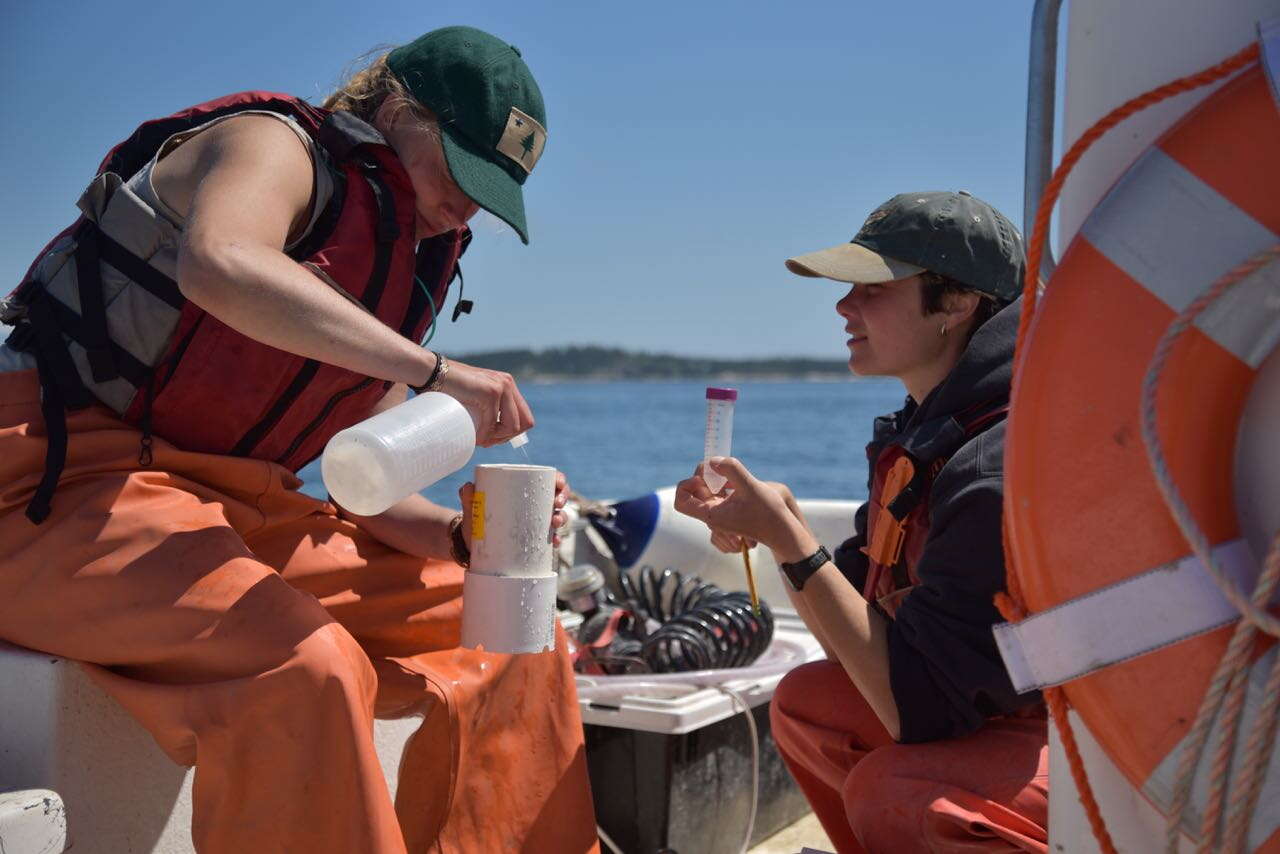
Four-wheel drive, food runs: What it takes to build a $2M research center on Hurricane Island
 Courtesy / Hurricane Island Center for Science and Leadership
Hurricane Island Center for Science and Leadership expects to have its new field research station operating next spring.
Courtesy / Hurricane Island Center for Science and Leadership
Hurricane Island Center for Science and Leadership expects to have its new field research station operating next spring.
The Hurricane Island Center for Science and Leadership cut the ribbon earlier this month on a new field research station.
The center, a science and education nonprofit established in 2009, conducts marine science research, hosts visiting researchers, and offers experiential education programs for young people. It's located on 125-acre Hurricane Island, part of the Fox Islands Archipelago in Penobscot Bay, about 12 miles offshore from Rockland.
The new field research station is one of only two in the Gulf of Maine. The goal is to serve as a state-of-the art science facility and a hub to connect local students, teachers, scientists, community leaders and fishermen in shared efforts to better understand the marine environment.

“We’re really uniquely situated here to increase the capacity to do marine sustainability science and education that really makes a difference to Maine,” said Richard Wahle, a University of Maine marine biologist.
Origin
In the last decades of the 19th century, Hurricane Island quarries were an important source of granite, according to "Hurricane Island — The Town that Disappeared" by Eleanor Motley Richardson and published by the Island Institute in Rockland.
Labor was provided by European immigrants, who established a small town on the island.
The last shipment of giant blocks sank in heavy seas in 1914.

A man named William Gaston bought the island when the bank that held it went into receivership in 1936. He later deeded it to his son, James Gaston, who eventually built a summer home there.
From 1964 to 2006 Hurricane Island was a summer base camp for Outward Bound, an outdoor organization that conducts adventure-based courses. The Hurricane Island Outward Bound base camp was founded by Peter Willauer.
Now headquartered in Camden, the Hurricane Island Outward Bound School continues its nonprofit educational mission. And the Gaston family still owns Hurricane Island.
Willauer went on to establish the Hurricane Island Center for Science and Leadership in 2009. In 2012, the organization ran its first six programs serving 86 participants.
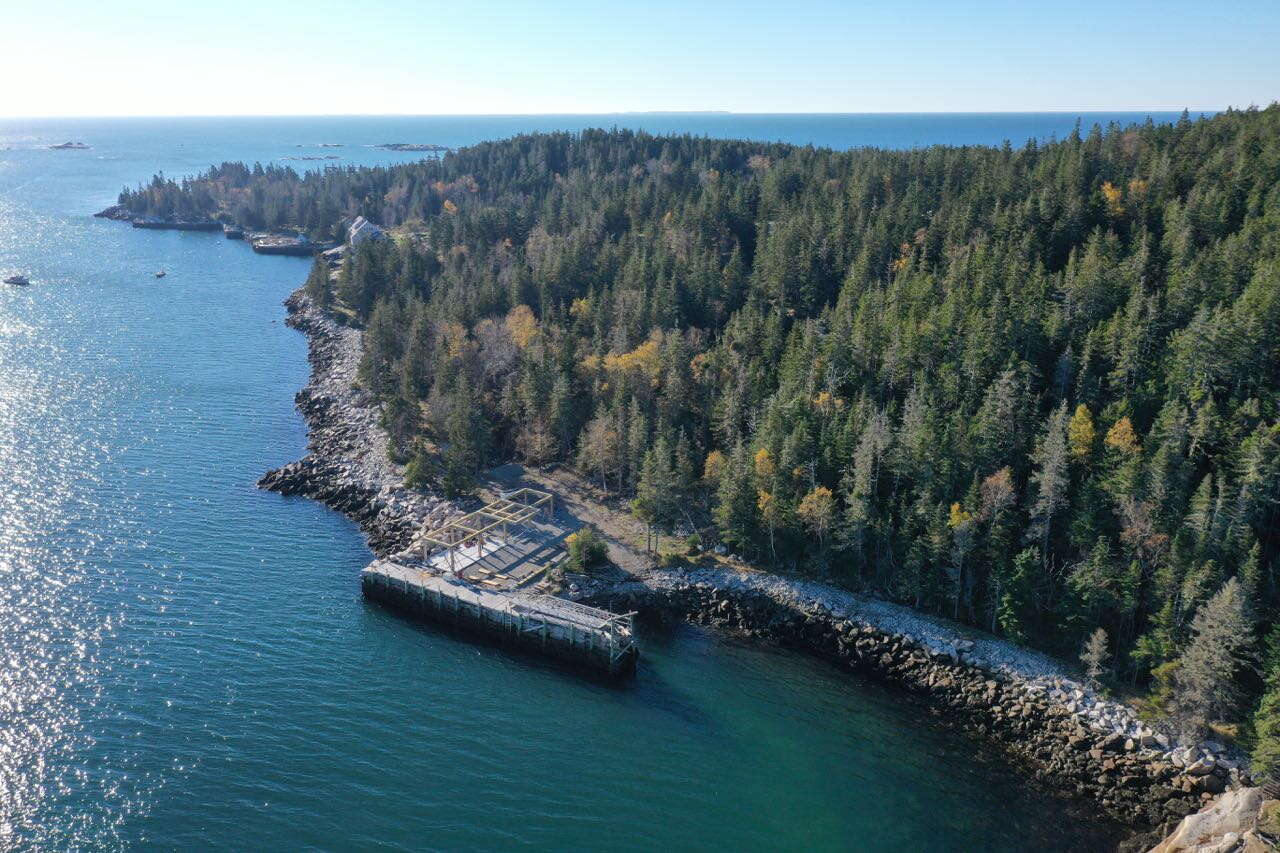
This year, the organization is scheduled to deliver 5,444 program days to 987 students and 565 adults. It has 14 year-round and 25 seasonal employees. Within that group, there are four year-round and four seasonal research staff.
In addition to serving local schools and the community, the organizations annually hosts 60 to 70 young adult leaders from 30 countries on six continents who plan sustainability initiatives for their home communities while training at Hurricane Island.
That program is a partnership with United People Global and has grown to virtually engage over 700 young adult leaders from 130 countries since its inception in 2019.
Over the past six years, Executive Director Bo Hoppin has moved the organization from an annual budget of just over $1 million to this year’s budget of $2.7 million.
Facilities
Hurricane provides experiential, hands-on education programs and research opportunities focused on marine sciences, STEM education, human ecology, sustainable living technology, citizen science initiatives, and leadership.
Its programs reach public and private middle and high school students and teachers, college and university students, graduate researchers, undergraduate interns, amateur naturalists, scientists, sustainable engineers and volunteers.
Facilities today include a galley and mess hall as the campus hub. A laboratory is full of field research equipment. A multipurpose space houses classrooms and a library. Restrooms consist of composting toilets. An infirmary is equipped with wilderness medical kits and beds, and staff are certified in wilderness first aid.
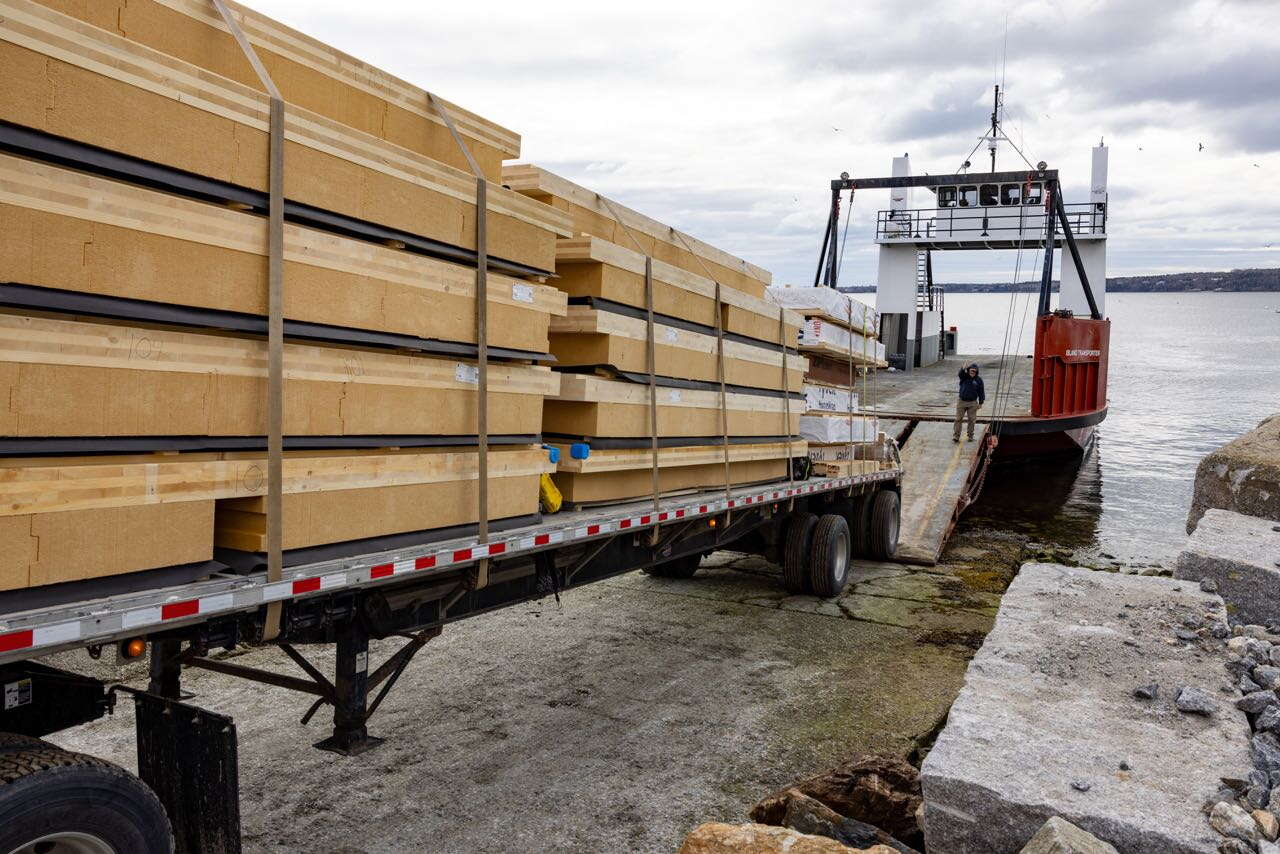
Housing includes five cabins for 22 people, a bunkhouse and wall tents for 24 people each, and yurts for 10 people.
Electricity comes from 24 solar panels and a battery bank. Water from a quarry pond is pushed by a solar pump, treated by an ultrafiltration unit and by chlorination, stored in 500-gallon tanks and gravity-fed to the galley, shower house and composting toilet building.
A propane on-demand hot water heater provides backup heat. A wetland was constructed in 2013 for treatment and dispersal of graywater. Gardens produce flowers and fresh produce. There’s a greenhouse and composting.
Waterfront facilities include a dockhouse, piers, boat supplies, life jackets, research equipment, boats and moorings. The organization holds a demonstration lobster license for research purposes.
The organization also manages a 3.2-acre aquaculture site.
New station
The organization’s board of directors began considering the feasibility of constructing a marine field research station in 2014.
By 2017, construction began to reinforce the pilings and pier at the site.
Opal Architects in Belfast was contracted two years later to design the facility. Ground was broken in 2021.
Opal Architects’ sister firm, Opal Build, constructed modular high-efficiency panels, delivered them to the island and assembled them to make a passive house envelope.
Additional work included erecting posts and beams, installing exterior siding and a metal roof, performing interior finish work and adding a staircase. Gawler & Daughters Sheet Metal Roofing Co. in Belgrade performed the roof work.
The shore-based facility is designed to serve as a “visual epicenter” for the organization’s mission and sustainable campus, and to increase capacity for year-round research in Penobscot Bay.
The structure has been completed, but the building remains to be fully equipped.
Among the major systems to be installed is plumbing for indoor flowing seawater tanks, which allow scientists and students to interact with species in a controlled environment a few hundred yards from the island’s experimental aquaculture site where scallops, kelp, mussels, oysters and other specimens can be grown or collected from the wild.
Additional installations will be a dry room and teaching space.
The passive-house envelope is designed to minimize power consumption for the solar micro-grid that powers the campus, keeping emission and environmental impact to a minimum. Opal's sister company, Madison-based TimberHP, helped secure European wood fiber insulation board for use on the exterior of the building. (TimberHP is selling its domestically manufactured loose fill insulation, TimberFill, and will soon add wood fiber batt and board insulations to the products being made in Madison.)
“When you take the wood fiber insulation and the cross-laminated timber, you’re talking about an all-wood construction which is renewable, recyclable and carbon storing with a negative carbon footprint when we build that building,” said Matt O'Malia, Opal's executive partner.
$2M price tag
The total construction cost, including equipping the facility and installing the flowing seawater system, is expected to be $2,081,660.
Initial funding came from a $250,000 one-to-one challenge gift from the Alan Lewis Pinnacle Leadership Foundation, received in 2019. After meeting the challenge, additional funds were raised through individual gifts and foundation grant support.
To date, the organization has secured $1,384,964, which includes $649,964 from individual gifts and $735,000 comes from foundation grants and pledges.
Foundation support includes grant funding from:
- J.P. Fletcher Foundation
- Lewis Family Pinnacle Leadership Foundation
- Virginia Wellington Cabot Foundation
- Davis Family Foundation
- Seth Sprague Educational and Charitable Foundation
- Maine Technology Institute
- Morton Kelly Charitable Trust
According to the organization, the facility fills a need from the scientific community for an offshore marine lab and sampling site as water temperatures and other measurable variables continue to change in the waters of the Gulf of Maine.
Once completed, the station is expected to:
- attract scientists and higher education students for field courses;
- cultivate partnerships with fisheries, businesses, higher education institutions and laboratories;
- establish hands-on STEM curricula for middle and high school teachers and students;
- develop opportunities for researchers, teachers, and students to collaborate using Hurricane Island as a hub to engage in community-driven science that builds a more sustainable future.
Building the research station and this year’s hiring of a new research director, Anya Hopple, represents a commitment to further the organization’s research mission, said Hoppin. That includes the organization’s own research work, which today is primarily focused on scallop aquaculture but is expected to expend under Hopple’s leadership. Another goal is to attract more outside researchers.
“We’re very much emerging,” Hoppin said.
The island’s geographic location, he said, “is a unique opportunity to study a body of water that’s in the 99th percentile of global warming,” making the research station an opportunity for scientists to use as a jumping-off point for their research sites, then return to process their results.
Hopple, a biogeochemist who most recently worked for the Smithsonian Environmental Research Center, said a goal is to transition the island’s research presence from seasonal — currently operating form March through November — to year-round.
Weekly food run
Logistics for living on the island can be complicated.
There’s a weekly food run when the organization sends a boat to Rockland to meet a delivery truck and pick up odds and ends at local stores. Upon returning to the island, “It’s an all-staff effort,” said Hoppin with a laugh. “The staff heads to the dock and we make a people chain from the boat to the landing.”
From the landing, supplies are loaded into a four-wheel-drive solar-powered electric vehicle and taken to the mess hall. Once in a while, there’s an extra run to a market on the nearby island of Vinalhaven.
Materials to build the field station came on about 15 trips made by a barge supplied by Island Transporter LLC in Rockland.
“The landing craft lands, the vehicles with the materials come off, they’re quickly offloaded, and they go back on the transporter and back to the mainland,” Hoppin said. The transporter also brought heavy equipment such as a crane and lift.
Hoppin credited Opal Build employees for embracing island life.
“They’d usually come on the ferry run on Monday and they’d stay usually until Thursday, and work 10- to 12-hour days,” he described. “We have a dinner circle every night with all the students, and they’d sit with them.”
Next phase
Construction is about 75% complete. The next phase will include installation of the flowing seawater lab, the first-story panel siding, solar power system, and equipping the facility with scientific and educational fixtures and supplies.
The goal is to complete the work this fall and be operational by next spring, said Hoppin.
“We’re on a tremendous growth trajectory in general,” he said.
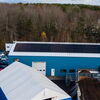


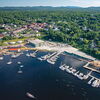






0 Comments